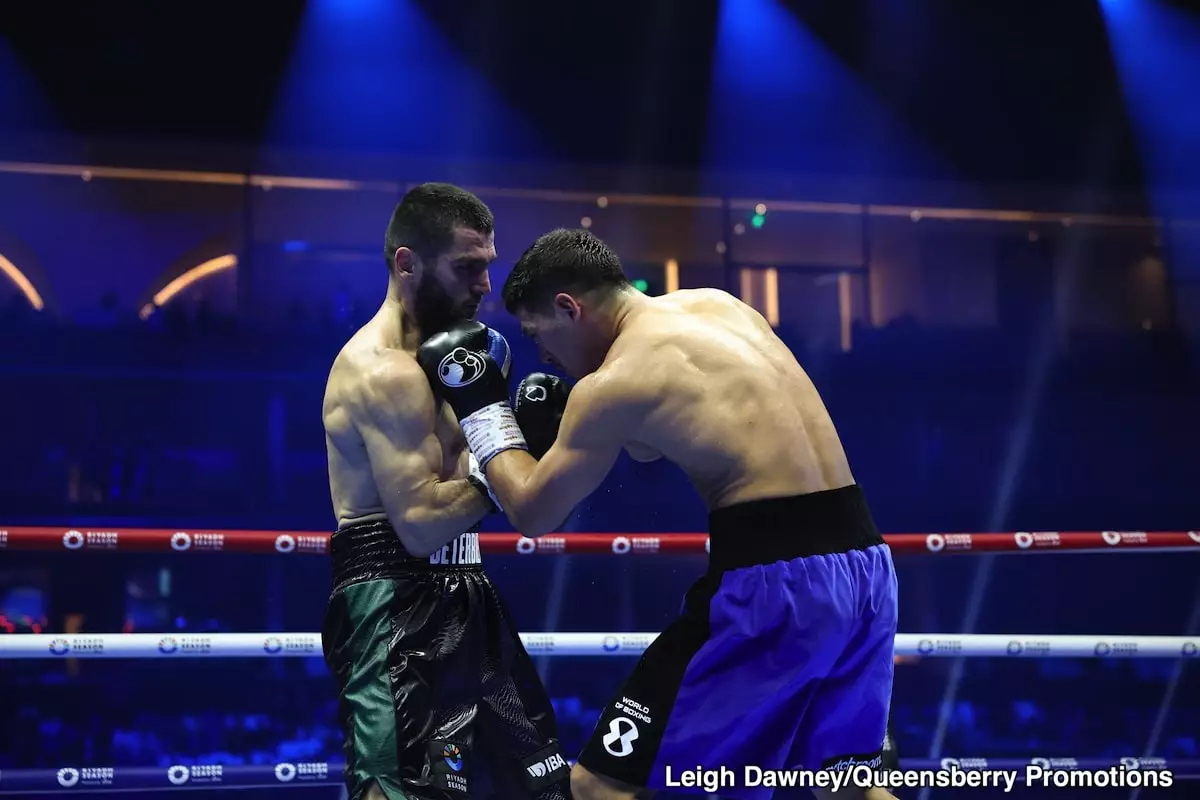The recent showdown between Artur Beterbiev and Dmitry Bivol in the light heavyweight division has ignited a firestorm of opinions among fans, analysts, and promoters alike. The bout concluded with Beterbiev taking home a 12-round majority decision victory—a result that has been contested by many who believed Bivol deserved the nod. Tim Bradley, a seasoned commentator and former champion, reexamined the fight and firmly stood by the judges’ decision, arguing that the outcome was justified. This debate raises crucial questions regarding fight scoring, the role of offensive and defensive tactics, and the interpretations surrounding what constitutes a “robbery” in boxing.
Understanding the Fight: A Flawed Strategy?
Bradley’s analysis suggests that Bivol’s strategy, although effective in avoiding significant damage early on, ultimately led to his downfall. His defensive style, described as “hit and don’t get hit,” created an impression of movement and elusiveness. However, this approach may have been too one-dimensional. According to Bradley, there comes a tipping point in boxing where defense without proper offensive output becomes detrimental. Bivol’s unwillingness to engage often left him on the back foot, allowing Beterbiev to set the pace and inflict meaningful strikes. While Bivol effectively avoided many punches, the ones he did absorb were nonetheless impactful, as evident from the marked bruising on his face after the bout.
This fight raised significant questions about how judges evaluate fighters. The debate centers on what judges prioritize during scoring—defensive maneuvers or impactful strikes. Beterbiev, known for his aggressive fighting style, landed fewer total shots than Bivol; however, the punch statistics tell a story of effectiveness versus activity. Bradley reinforced that judges are trained to assess not merely the volume of punches but their effectiveness. He argued that Beterbiev’s shots, while they may have appeared less powerful from a distance, were indeed landing with damaging intent, especially when they penetrated Bivol’s defense. This highlights the stark reality that in boxing, perception can deeply influence scoring.
In the aftermath of the fight, one particular promoter’s outburst over the judging displayed a familiar tendency for those in the boxing industry to react emotionally to unfavorable results. Calling for a judge to be barred from future bouts simply because of a scoring disagreement reflects poorly on the integrity of the sport. Rather than fostering constructive dialogue about judging and scoring methods, such reactions could lead to an environment where judges are hesitant to make tough calls out of fear of backlash. This reaction exemplifies how deeply intertwined emotions are with the sport, showcasing the need for a more nuanced understanding and appreciation of the judging criteria.
The debate surrounding Beterbiev vs. Bivol encapsulates larger issues within boxing related to scoring consistency, interpretation of offensive versus defensive actions, and the transparency of the judges’ criteria. While some may call it a “robbery,” others like Bradley and Algieri emphasize the complexity of scoring in a close fight. This incident serves as a benchmark for the boxing community to consider how fights are evaluated and encourages fighters to adopt more balanced attack-defensive tactics. The ongoing discourse around this fight will likely influence future encounters and shape the way scoring is discussed moving forward.
In essence, the Beterbiev vs. Bivol clash is not just a singular event; it reverberates throughout the boxing community, prompting questions about tactical execution, the philosophy of judging, and the emotional responses that often accompany the sport. As fans and analysts digest this bout, it becomes clear that a thorough understanding of scoring nuances can contribute significantly to the narrative of boxing and perhaps can even refine standards for how future fights might be judged.


Leave a Reply